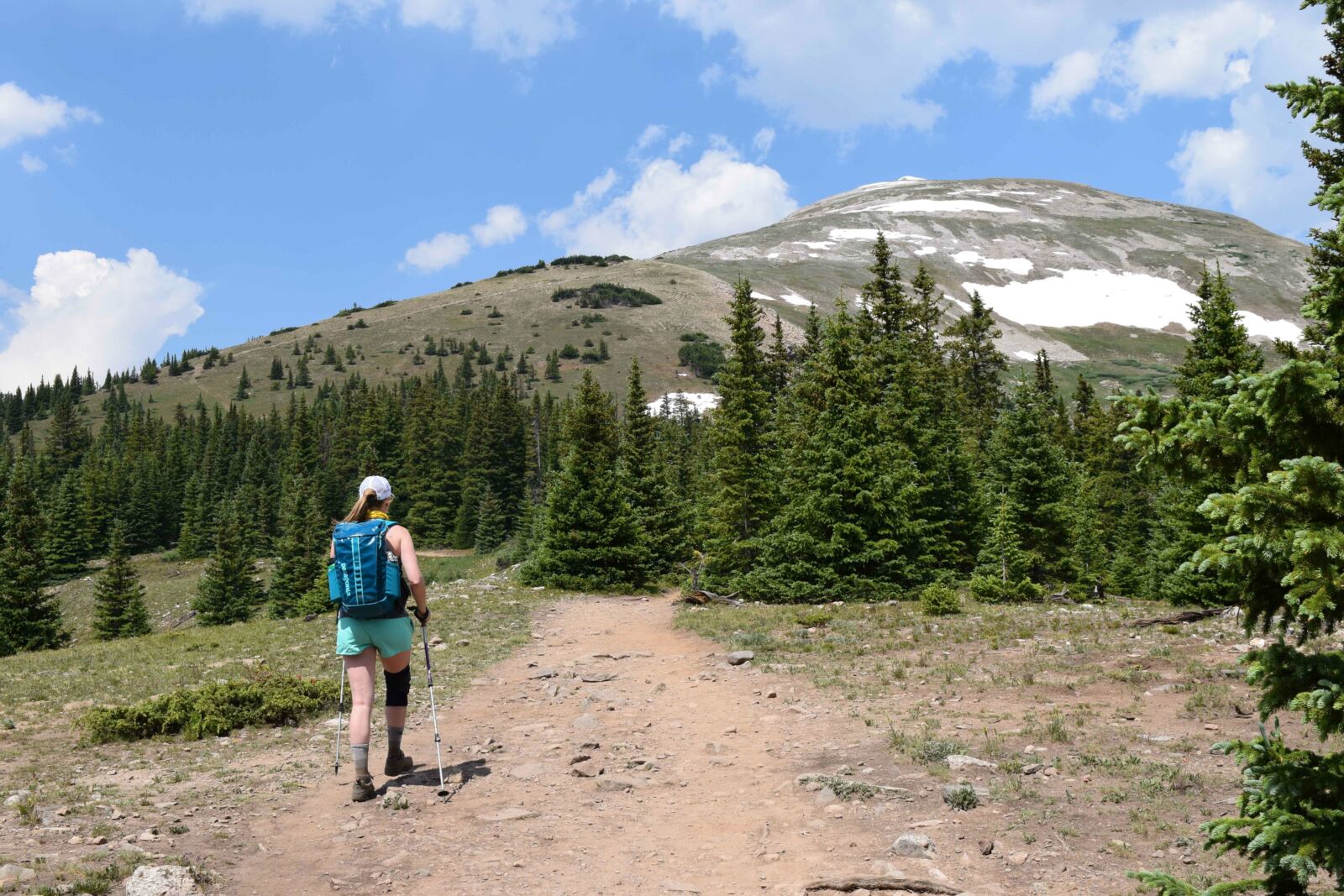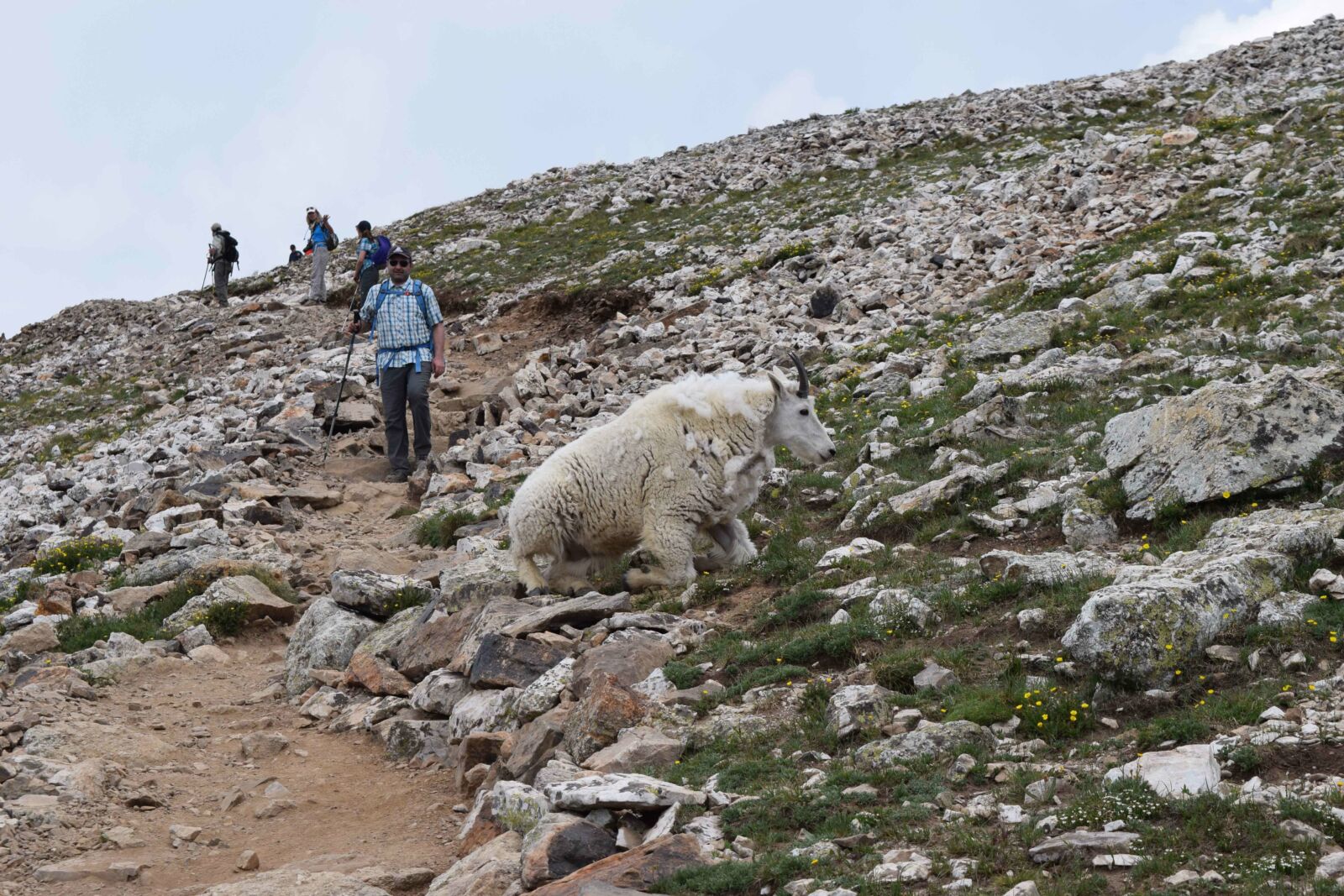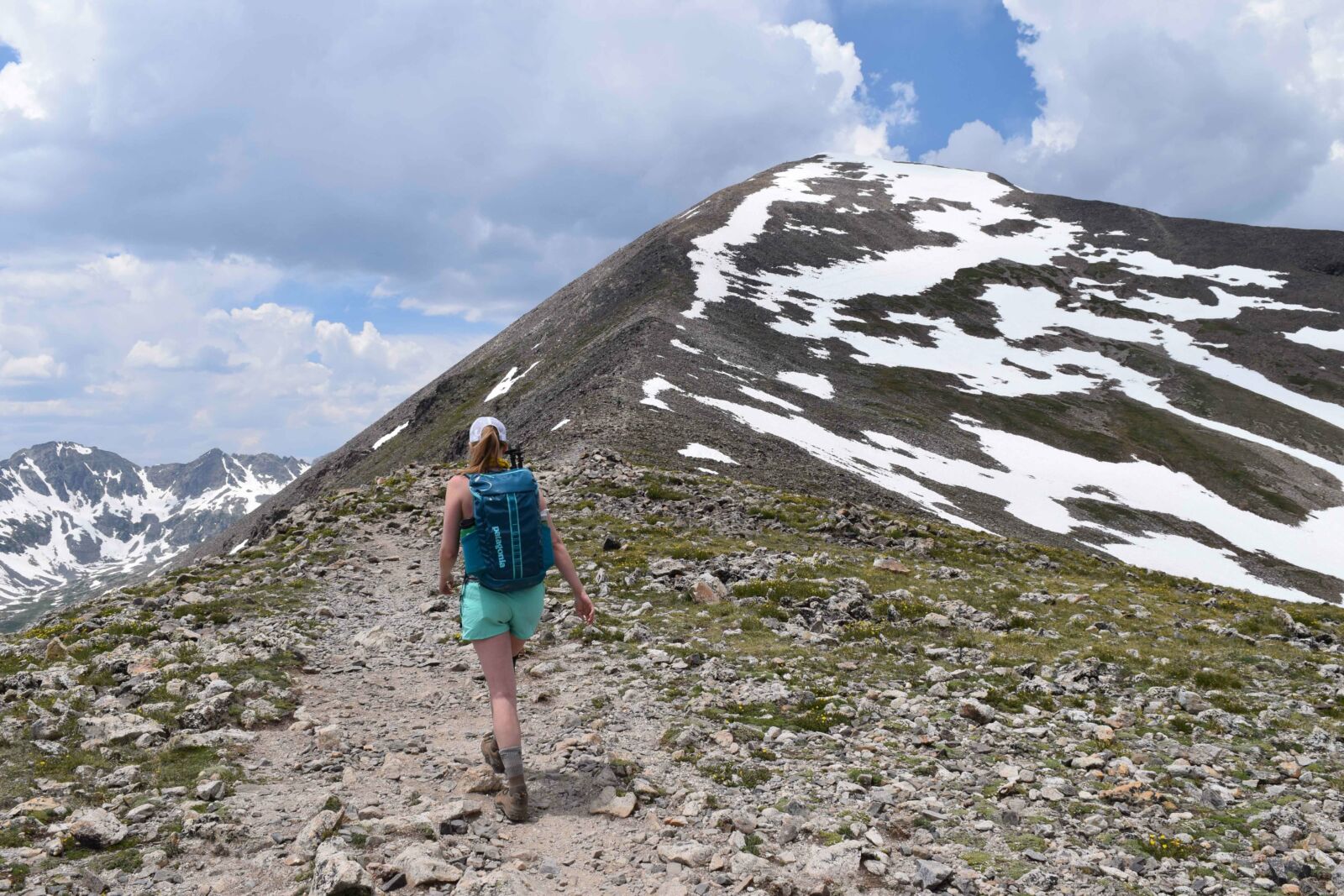After about 15 more steps, I needed to rest again.
I was having just as much of a mental battle with the mountain as a physical one. I kept having to tell myself that I really could reach the summit.
When my co-worker Emily had first suggested we hike Quandary Peak during my visit to Colorado, I quickly said yes. Not only did I relish at the opportunity to spend the day outside, I was eager to see some of the trailwork that the crews had already accomplished this season.
Thanks to generous support from REI and others, Quandary Peak is receiving some much-needed TLC this season. Through the NFF’s Find Your Fourteener campaign, we’re uniting and empowering local organizations to support trail improvements and habitat restoration on some of the most heavily-used trails on Colorado’s National Forests.
Back home in Montana, I frequently hike on our National Forests and maintain an active lifestyle. I foolishly thought, “How hard could a three mile hike up to a peak be?” What I was aware of but didn’t truly account for was the elevation. We started our hike at 10,850 feet.


And while the trail provides gorgeous views, it is a constant and steady climb upwards, because, well, we’re trying to get to the top of a mountain.
Along the way, the trail showed signs of heavy use, but also maintenance and improvements. I quickly began noticing small retaining walls and more frequently, steps.
To a hiker, our total interaction time with a single step is typically seconds. However, thanks to my work at the NFF, I know that single step probably took hours to install.
The last mile of the trail tested just about every ounce of will power my muscles had left in my body. High above the tree-line, the approach to the summit had me channeling the mountain goats we had seen minutes ago. Due to the steep angle and the countless rocks, the trail became harder and harder to distinguish.
On my frequent rests, I could see that numerous hikers had begun making their own routes to the top. And while it may be exciting to find your inner explorer and blaze a new trail, I could tell those new trails weren’t helping this landscape thrive. I noticed sparse, fragile flowers barely holding onto the thin alpine soil. Hiker-created trails often mean footsteps on top of these special plants.


New steps constructed this year on the lower part of the trail.
While the trail crews weren’t working that day, I was comforted by – and in awe – of the upcoming work they had this season. Here I was, gasping for each breath with little weight on my back and soon they’d hike this same trail with more than 40 pounds of gear. And, they’d do it several times throughout the season, all to make sure I had easy steps in a healthy landscape.
Unfortunately an incoming storm forced us to (wisely) turn around 200 feet from the summit. As we scrambled back down to safety, I appreciated the steps and safe trail more than ever before.
As much as I applaud the thousands of hikers each year that ascend these majestic peaks, I truly appreciate the dedicated trail crews and volunteers who spend time ensuring the trails endure for generations to come.
Learn more about our work on Colorado's Fourteener's here.

